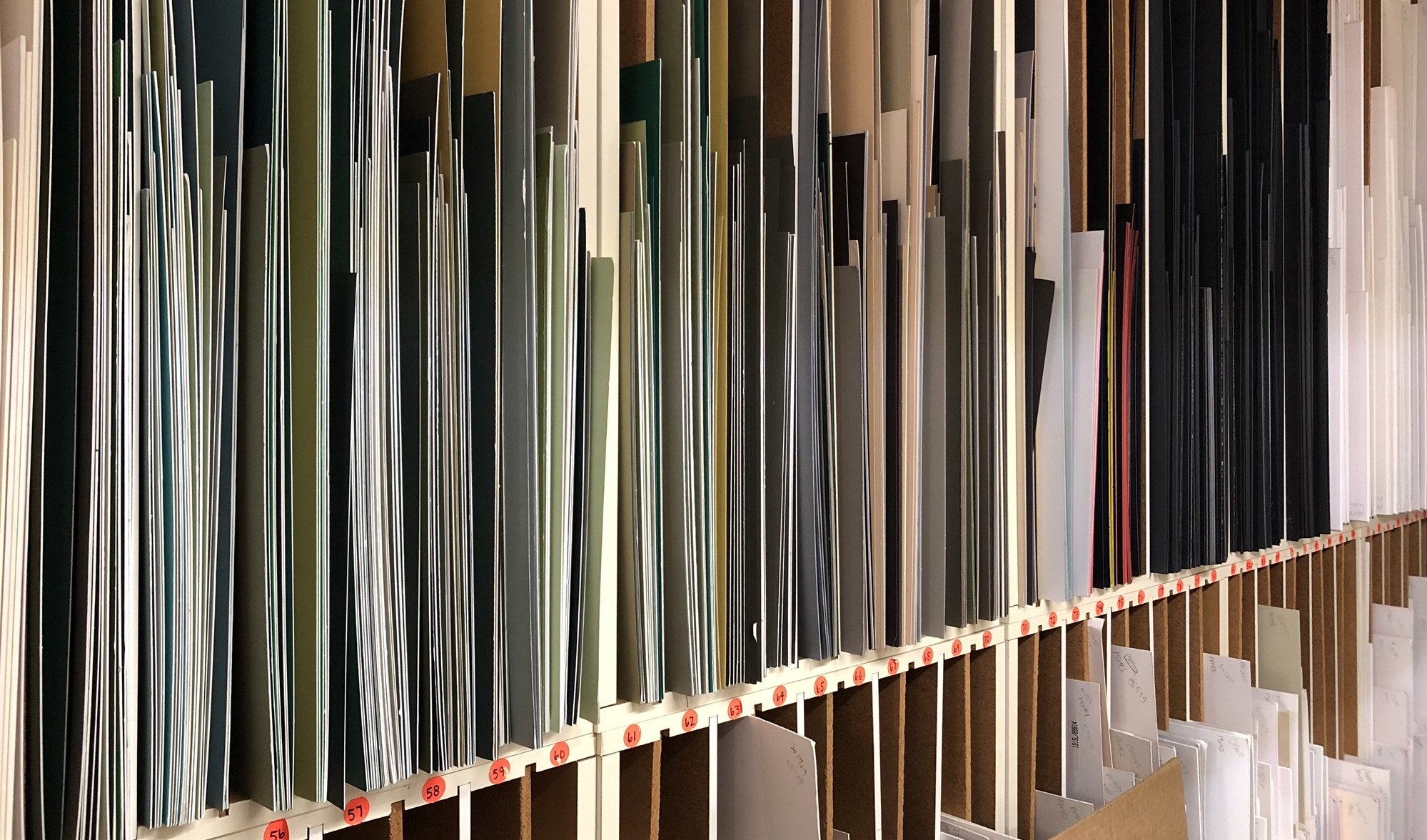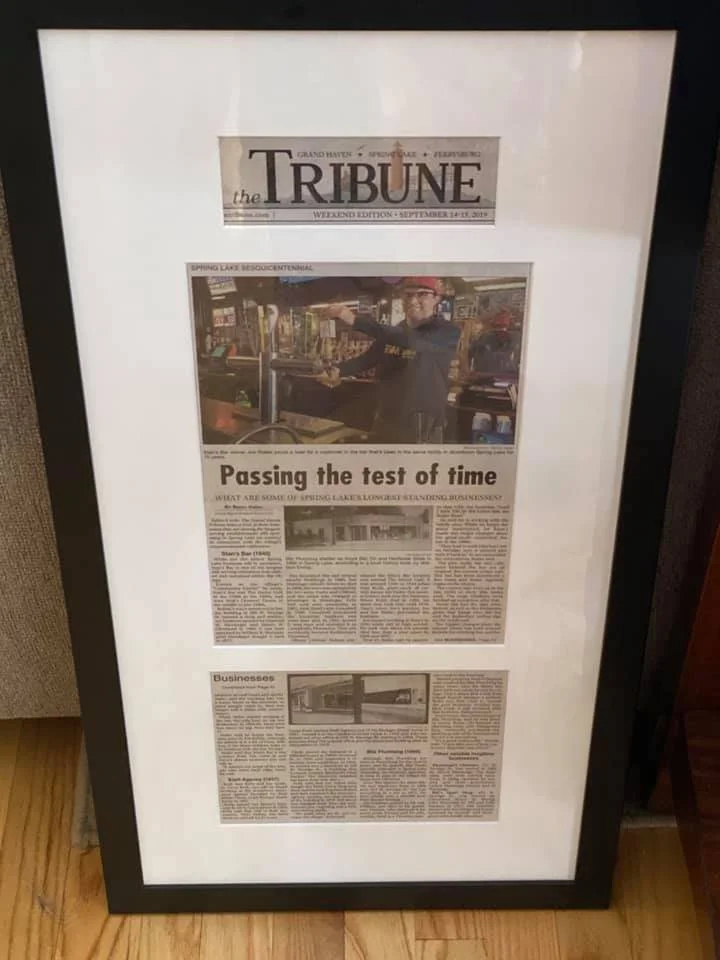
Our Materials
Our materials serve a dual purpose: Accentuating your artwork, while also playing a critical role in protecting and preserving it.
-
Picture frame moulding is used to make the frame that surrounds and protects a piece of artwork. It is typically made of wood, metal, or composite materials and comes in a variety of styles, shapes, and sizes. The most common profiles include flat, rounded, beveled, and ornate. Each profile creates a unique aesthetic and can be customized further with finishes such as paint, stain, or gilding.
We have the largest selection of frame moulding in West Michigan, stocking over 8,000 frame varieties.
Many are handcrafted in Europe, and these authentic wood frames come in a variety of stains and finishes. We also carry a large selection of metal frames and closed corner frames (a museum-grade speciality). For each project, we cut and join the selected frame moulding in-house, achieving a perfect, custom fit. We also specialize in original frame repair. For more details, see our service, Conservation & Restoration.
-
Mat board, or matting, is a crucial component in picture framing. It is used to separate the artwork or photograph from the glazing or glass, creating a visual break and providing space for the art to breathe.
We offer thousands of conservation-grade mat board varieties:
Museum Mat Board: These Conservation-grade mats are acid-free and lignan-free. They are buffered pH-neutral to eliminate the acidic nature and additionally treated to remove lignan, a compound that contributes to discoloration.
Conservation Mat Board: Another conservation option that has been treated to be Acid Free, though it is not Lignan-free.
Regular Mat Board: Standard wood pulp matboard, serving a functional role as a spacer between the art and glass, and serving a decorative role by accentuating your art.
-
Mount board is used in picture framing to provide support and stability to the artwork. It is attached by heat press or other mounting methods (some reversible, some irreverible) to the back of the artwork, ultimately removing inconsistencies such as wrinkles or puckers.
We offer several varieties:
Acid-free foamcore: Foamcore that is pH-neutral and acid-free. An ideal choice for framing valuable or archival artwork, as it helps to prevent discoloration and deterioration over time.
Gatorboard: Consists of a foam core covered with a thin layer of wood-fiber veneer on each side. A popular choice for its lightweight and durable properties. It is resistant to bending and warping, making it ideal for framing large or heavy pieces, and is also moisture-resistant, which helps to prevent damage to the artwork over time.
Regular foamcore: A budget-friendly and versatile option commonly used for mounting posters, prints, and photographs. Available in a variety of thicknesses and colors, allowing for greater flexibility and customization. Not recommended for framing valuable or archival artwork. It is also prone to bending and warping than other options, making it less suitable for larger or heavier pieces.
-
Glass, or glazing, refers to the transparent material (typically some form of glass or acrylic) that covers and protects the artwork within a frame from environmental factors (such as dust, moisture, and UV light) that can cause damage or deterioration over time. The type of glazing used in picture framing can also impact the appearance of the artwork. For example, the choice of a non-glare or anti-reflective glass can reduce glare and improve the clarity of the image, allowing for better visibility and appreciation of the art.
We offer several options:
Museum Glass: Supreme clarity and anti-reflective, with 99% UV protection. It is considered the highest quality available.
Conservation Glass: Blocks harmful UV light, preventing color loss and cumulative damage. Available in Clear & Non-glare.
Non-glare Glass: Diffuses reflections for a matte look, with 47% UV protection.
Clear Glass: A common option, no anti-reflective properties, with 47% UV protection.
Acrylic (Optium Museum Acrylic): 99% UV filtering, anti-reflective, scratch resistant, and shatter resistant. Excellent for shipping and highly trafficked areas.
Plexiglass: Inexpensive, lightweight and shatter resistant. Great for shipping and highly trafficked areas. Available in Regular and Non-glare.
-
The type of hardware used to hang a picture frame depends on factors such as: the weight of the frame, the frame material, the type of wall it will be mounted on, and personal preference. The right hardware and installation expertise is important to ensure that the frame is securely mounted and does not fall and become damaged. For this reason, we also offer Delivery & Installation services.
We offer several types of hanging hardware:
Wire suspension: Flexible wire that is attached to the back of a frame with screws or eyelets, creating a hanging point. Typically for smaller, lighter projects.
Sawtooth hangers: A metal hanger with a series of sharp teeth that is attached to the back of the frame with nails. Hangs tight to the wall. Also used for smaller, lighter projects.
Strap hangers: Utilizing two sawtooth hangers matched with hardware installed in the wall for an exact, highly secure fit. A great solution for heavy works with wood frames.
Security hangers: Hanging hardware with a locking mechanism, designed for keeping artwork secure in public spaces.
Wall Buddy: Brackets on the back of a frame slide into two sections of rail mounted on the wall. Offers adjustability and a minimalist look.
Track master: Brackets on the back of a frame slide onto a metal or plastic rail mounted on the wall. Offers adjustability for most any size work. Designed in California, originally to protect artwork during earthquakes.
French clip: A metal bracket with a slot which interlocks with wall hardware for a secure fit. Great solution for large, heavy frames, as well as spaces needing easy swappability.
Command strips: We never use and do not recommend these double-sided adhesive strips.


